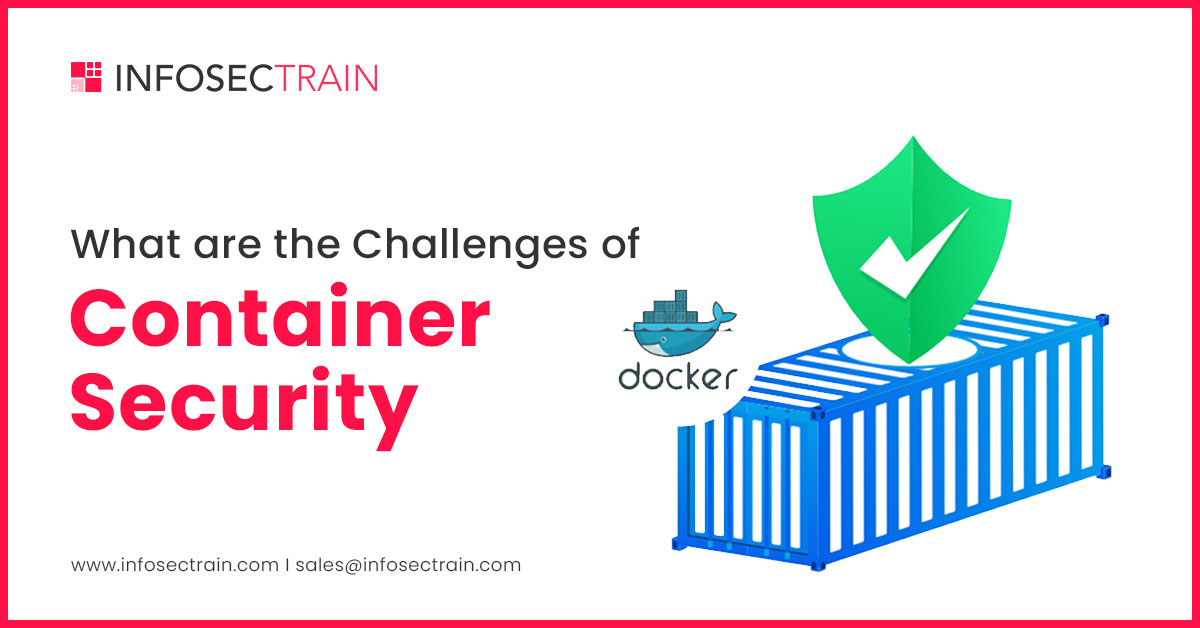What are the Challenges of Container Security?
Containers have revolutionized the way software is developed and deployed, offering a lightweight and efficient means to package and run applications. However, as with any technology, containerization comes with its own set of security challenges. In this article, we will explore some of the major challenges associated with container security and discuss strategies to address them.

Isolation and multi-tenancy:
One of the fundamental principles of containerization is process isolation. Containers share the same operating system kernel, which can lead to potential security risks. If an attacker gains access to one container, they may be able to exploit vulnerabilities in the shared kernel to compromise other containers on the same host. Implementing strong isolation between containers is crucial to mitigate this risk. Technologies like gVisor and Kata Containers offer lightweight VM-based isolation, enhancing container security.
Vulnerability management:
Containers often rely on a multitude of third-party libraries and components. Keeping track of vulnerabilities in these dependencies is a significant challenge. Vulnerabilities may not only be present in the base image but also in application code and runtime environments. Continuous vulnerability scanning and monitoring, along with automated patch management, are vital for staying ahead of potential threats.
Image integrity and trust:
Containers are created from container images, and ensuring the integrity and trustworthiness of these images is paramount. Without proper validation, images from untrusted sources can introduce malicious code into your environment. Employing container image scanning tools that check for vulnerabilities and malicious components can help you identify and mitigate image-related security risks. Furthermore, implementing a robust image signing and verification process can enhance image trust.
Orchestration and configuration management:
Container orchestration platforms like Kubernetes provide powerful capabilities for managing containerized applications, but they also introduce their own set of security concerns. Misconfigured settings, overly permissive permissions, and improperly managed secrets can lead to security breaches. Regularly auditing the configuration of your orchestration platform and following best practices can help reduce these risks.
Runtime security:
Monitoring and protecting containers during runtime is another challenge. Traditional security tools may not be sufficient in a containerized environment. Runtime security solutions specifically designed for containers, like container firewalls and runtime anomaly detection, can help detect and prevent unauthorized activities, such as lateral movement or privilege escalation, within the containerized environment.
Compliance and auditing:
Meeting regulatory and compliance requirements is a priority for many organizations. Container security practices must align with these standards. Maintaining audit trails, conducting regular security assessments, and documenting security measures are essential for compliance with regulations like GDPR, HIPAA, and others.
Network security:
Container networking can be complex, with containers often communicating over various network bridges and overlay networks. Ensuring proper network segmentation and implementing network policies can help control traffic between containers and protect against unauthorized access.
Secrets management:
Containers often require sensitive information, such as API keys and database credentials, to function. Storing and managing these secrets securely can be challenging. Utilizing dedicated secrets management tools and implementing practices like dynamic secrets generation can help safeguard sensitive data within containers.
Security patching and updates:
Maintaining up-to-date container images and runtime environments is a challenge. Frequent updates are essential to patch vulnerabilities and address security issues. Implementing an automated pipeline for image updates and utilizing tools for live patching of running containers can help streamline this process.
Education and training:
Last but not least, human error remains a significant factor in container security breaches. Without proper education and training, development and operations teams may inadvertently introduce security vulnerabilities. Regular training sessions and awareness programs can help reduce the risk of these human-related security issues.
Final words:
While containers offer numerous benefits in terms of flexibility and efficiency, they also introduce a range of unique security challenges. To address these challenges, organizations must adopt a proactive and multi-layered approach to container security. This approach should include strong isolation, image integrity checks, vulnerability management, runtime security measures, proper secrets management, compliance adherence, network security, timely patching, and ongoing education for teams. By focusing on these crucial areas, organizations can harness the power of containers while minimizing security risks and vulnerabilities in their software ecosystems.
InfosecTrain’s various cloud training courses, like CCSP, equip you with the security skills needed to fortify container environments, ensuring your digital assets remain secure in the ever-evolving cloud landscape.
TRAINING CALENDAR of Upcoming Batches For CCSP
| Start Date | End Date | Start - End Time | Batch Type | Training Mode | Batch Status | |
|---|---|---|---|---|---|---|
| 25-May-2024 | 30-Jun-2024 | 19:00 - 23:00 IST | Weekend | Online | [ Open ] | |
| 29-Jun-2024 | 11-Aug-2024 | 09:00 - 13:00 IST | Weekend | Online | [ Open ] |




 1800-843-7890 (India)
1800-843-7890 (India) 
